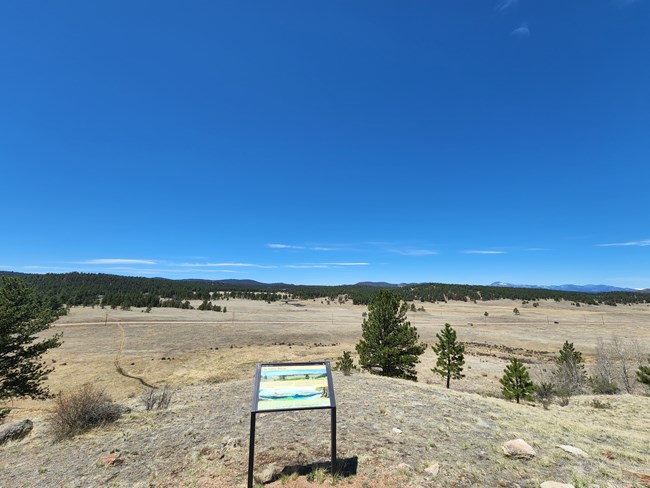
Geologic TrailThe Florissant valley is a constantly changing landscape, shaped by the power of erosion, uplift, and eruptions. Geologic activity recorded at Florissant began at least one billion years ago when magma cooled to form the Pikes Peak pluton. Volcanoes continued to influence the area until at least 34 million years 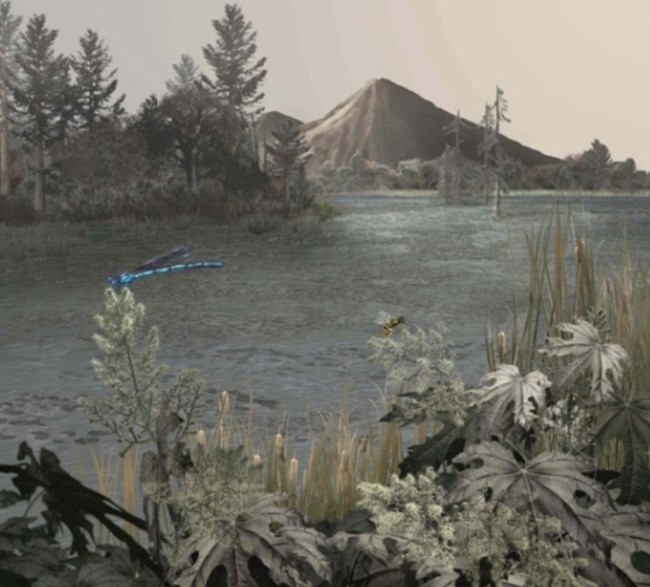
Geologic History of Lake FlorissantThe geologic history of the Florissant Formation includes volcanic eruptions, formations of a lake, and erosion. Geologists can interpret this history by studying the rocks that resulted from these events. A diagram called a stratigraphic column shows the thickness and type of each rock layer present today.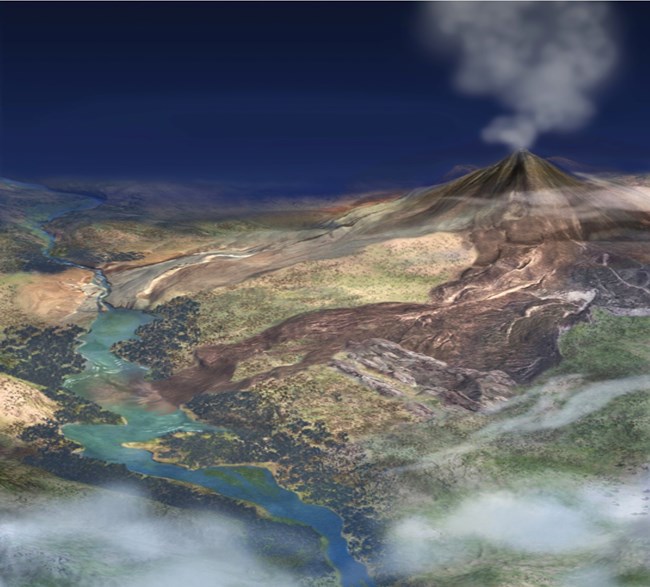
Road Guide to the Florissant's Volcanic PastEroded remnants of the ancient Guffey volcano are visible from a scenic overlook 13—14 miles (21—22 km) from Florissant Fossil Beds National Monument (map on back). This volcano had an enormous impact on the Florissant valley 34—36 million years ago. Volcanic debris flows entombed giant redwood stumps along the stream valley and later dammed the stream to form Lake Florissant. Eruptions of volcanic ash fell into the lake and led to the formation of delicate shale that preserved fossil leaves and insects.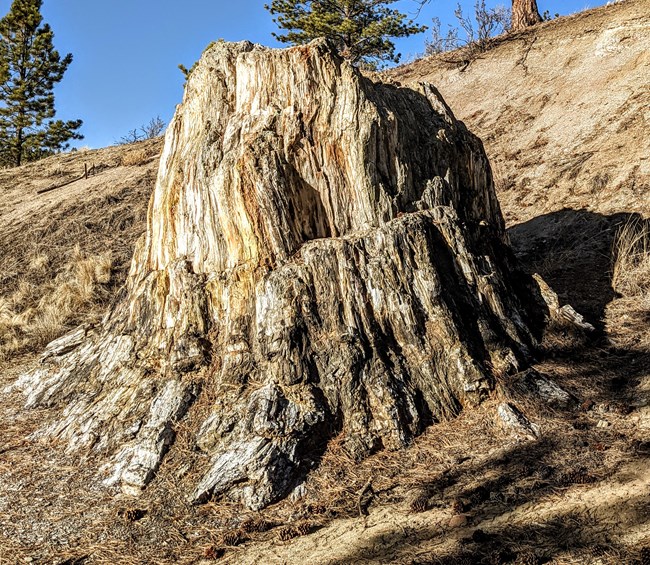
NPS Photo: Clara Peterson Petrified ForestA tall forest grew in the Florissant valley 34 million years ago. Some of the trees survived as fossils that are visible on trails today. Scientists have studied Florissant’s fossil wood to understand changes in climate and forest composition and the process of petrification—turning wood into rock.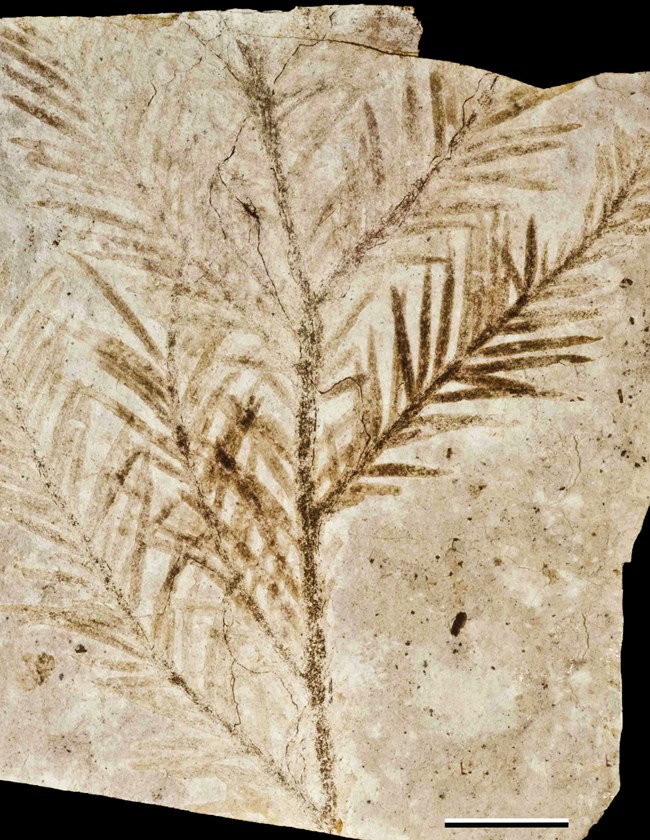
Fossil PlantsMore than 130 plant species have been described from Florissant. These are represented by leaves, fruits, flowers, seeds, wood, and pollen, yet the only fossils most visitors see are the stumps of ancient redwood trees. Why is this? Fossilization is a complex process that can be affected by a number of factors, and multiple forms of fossilization took place during Eocene Florissant.Fossil InsectsRelatives of insects were the first life forms to live on land, and today insects are the most numerous and diverse animals on the planet. Insects are rare as fossils, however. The Florissant fossil beds contain an exceptional diversity and abundance of fossil insects, including more than 1,500 different species.This bulletin can be requested at the desk in the Visitors Center. 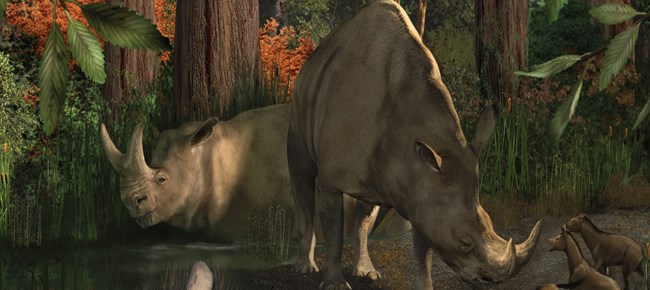
Fossil VertebratesFrom snakes to mammoths, fossils of more than two dozen species of vertebrates have been found at Florissant. Vertebrate fossils are rare because of the environmental conditions necessary for their preservation. Of the fossil vertebrates found, fish skeletons and mammal teeth are the most abundant. Many of the mammals that lived 34 million years ago are unlike any living today. Scientists are still describing new species of animals from Florissant fossils.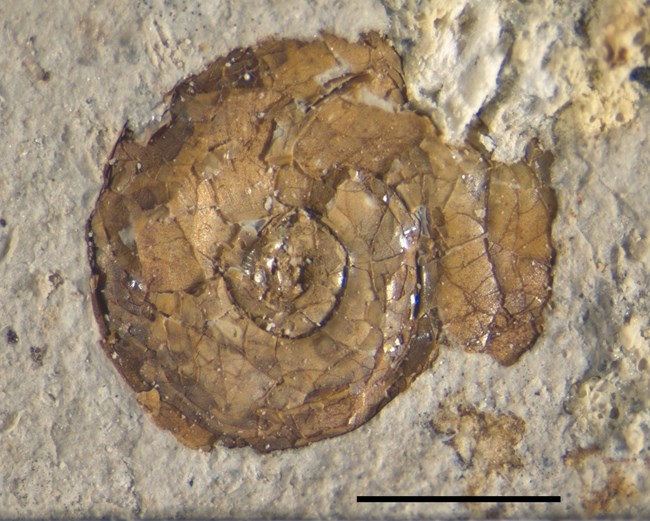
Microscopic WorldFor every Florissant fossil large enough to see with the human eye, there are countless fossils only visible under a microscope. Millions of pollen grains, algae, and microscopic invertebrates are preserved at Florissant, and some played a key role in the process of fossilizing other organisms at the site. Microfossils are critical for understanding habitat, water quality, and climate at Florissant 34 million years ago.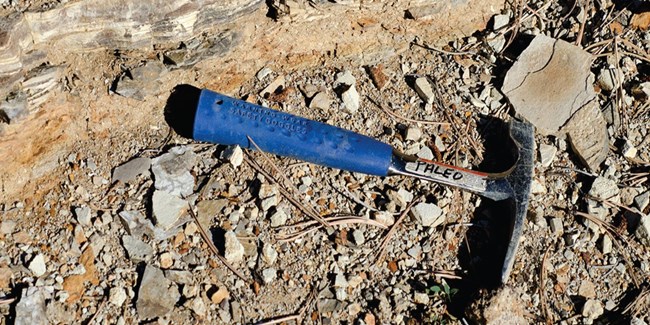
Paleontology ProgramThe paleontology staff at Florissant Fossil Beds National Monument includes a paleontologist, a museum technician, and several interns. These specialists monitor fossil sites around the monument, curate fossils in the on-site museum, and work with scientists at other institutions to conduct research about Florissant.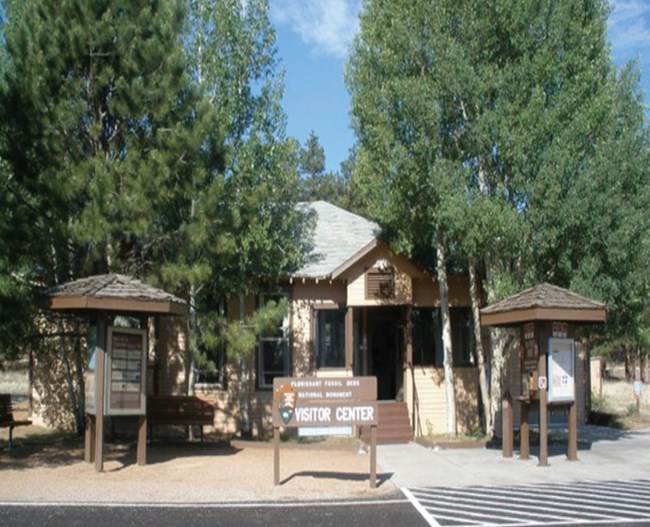
History of Science and Land UseThe modern history behind Florissant Fossil Beds National Monument spans a century and a half. This history has involved many influential players—tribes, homesteaders, ranchers, scientists, developers, activists, politicians, and lawyers—who have helped settle, study, and preserve this place.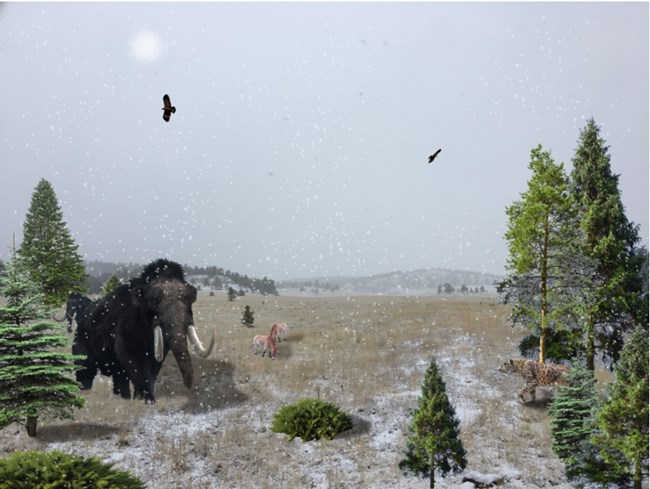
Climate ChangeChanges in the Earth’s climate have occurred since the planet formed 4.5 billion years ago. Eocene Florissant was at the threshold of one of the most significant climate changes since the extinction of non-avian dinosaurs—a massive cooling event that affected life around the globe. Modern Florissant faces a similar challenge from climate change today. How can fossils help us understand climate change of the past, and how does this knowledge help us make decisions in response to modern climate change? |
Last updated: March 18, 2024
